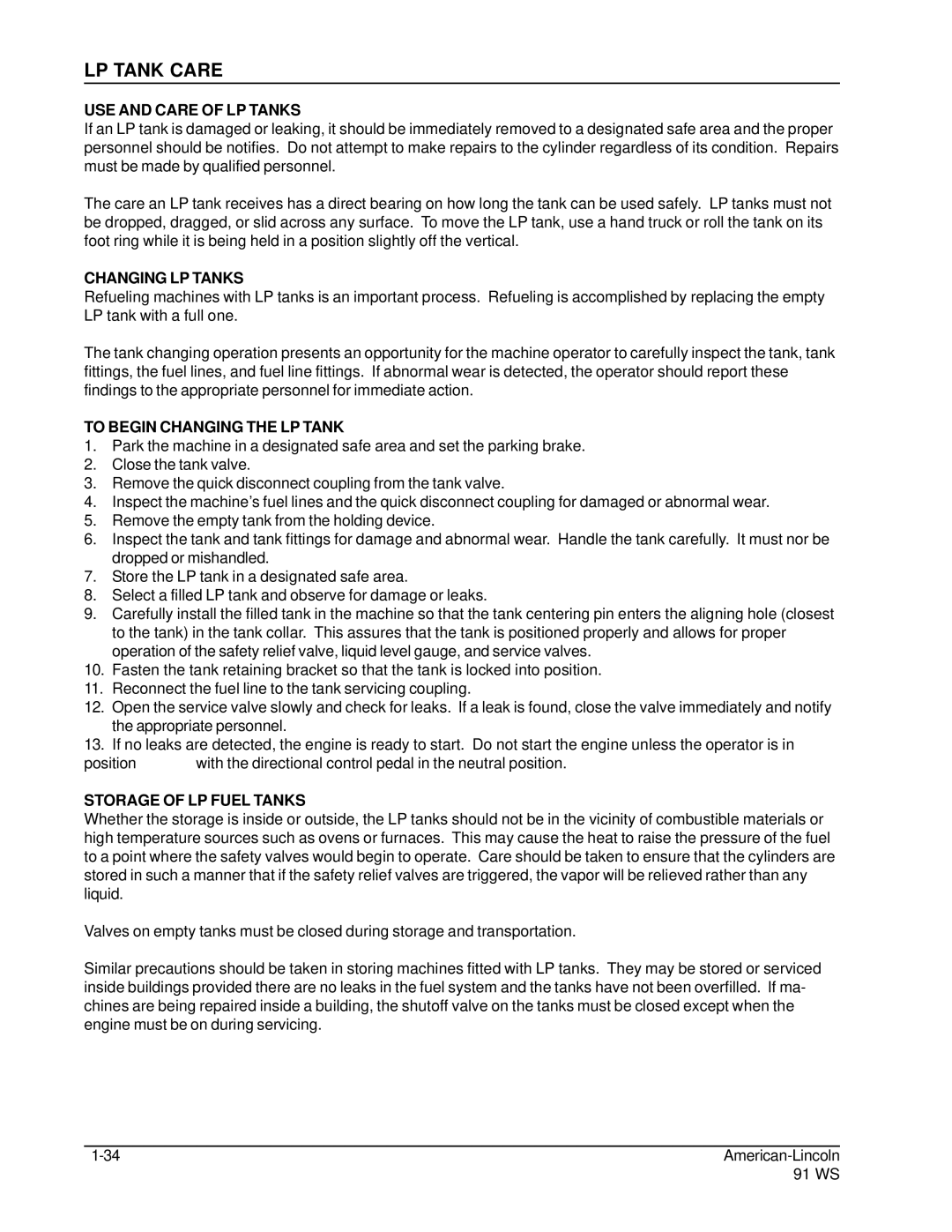91WS specifications
The Nilfisk-ALTO 91WS is a state-of-the-art waste water vacuum system, designed to tackle both outdoor and indoor cleaning tasks across various industries. This versatile machine is particularly renowned for its impressive suction power, allowing for the effective removal of liquid waste, sludge, and debris in less time and with minimal effort.One of the key features of the 91WS is its robust construction. Designed with durability in mind, the vacuum has a sturdy chassis and components that are resistant to wear and tear, making it ideal for demanding environments such as construction sites and heavy industry. The unit is also equipped with large wheels, ensuring ease of mobility even when fully loaded.
The 91WS incorporates advanced technology to enhance its performance. Its powerful motor delivers strong suction capabilities, while the innovative filtration system effectively separates solids from liquids, preventing clogging and maintaining optimal efficiency. The vacuum's advanced design also allows for quick and easy emptying, minimizing downtime and boosting productivity.
Another significant characteristic of the Nilfisk-ALTO 91WS is its user-friendly interface. Operators will appreciate the intuitive controls that make it simple to adjust settings and monitor performance. The vacuum is designed for easy maintenance; access to key components is straightforward, ensuring that servicing is efficient, and the machine continues to operate at peak capacity.
The 91WS also features multiple attachment options, allowing users to customize the machine for specific tasks. Whether it's cleaning up after spills or managing waste disposal, the versatility of the attachments ensures that it can handle various cleaning challenges with ease.
Safety is paramount in any industrial environment, and the Nilfisk-ALTO 91WS is designed with several safety features. The integrated float system prevents overflow, and the durable construction of the vacuum ensures that it can withstand rigorous use without posing risks to the operator.
In summary, the Nilfisk-ALTO 91WS is a powerful and versatile waste water vacuum that excels in demanding situations. With its strong performance, advanced technologies, and user-friendly features, it is an ideal solution for any business looking to optimize their cleaning processes while ensuring safety and efficiency.

